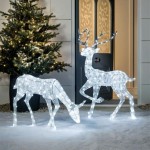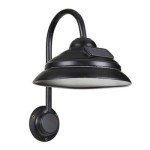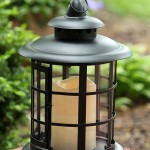How To Do Outdoor Lighting In Blender
Creating realistic outdoor lighting in Blender can greatly enhance the visual impact of your 3D scenes. Whether you're crafting a serene sunset over a cityscape or the dramatic shadows of a nighttime forest, mastering outdoor lighting techniques is crucial. This article will delve into the fundamental principles of outdoor lighting in Blender, guiding you through the process of achieving visually compelling results.
Understanding Natural Light Sources
The foundation of outdoor lighting lies in understanding the behavior of natural light sources, primarily the sun. The sun's position in the sky dictates the direction, intensity, and color of light that illuminates your scene. Here's a breakdown of key factors to consider:
- Time of Day: The sun's position changes throughout the day, influencing the angle and color of light. Morning and evening offer softer, warmer light with longer shadows, while midday produces a harsher, cooler light with short shadows.
- Clouds: Clouds act as diffusers, softening the sun's rays and creating a more even illumination. Cloudy skies produce a softer, less directional light, while scattered clouds can create interesting patterns of light and shadow.
- Atmospheric Effects: Factors like fog, haze, and dust scatter light, creating atmospheric effects. Fog softens light and reduces contrast, while dust and haze can create a warmer, more vibrant glow.
Setting Up Sun and Environment Lighting
Blender provides powerful tools to simulate natural light sources. The Sun lamp acts as your primary light source, allowing you to control its position, intensity, and color. Environment lighting, often referred to as "Sky" or "HDRI," adds realistic ambient light and reflections, creating a more immersive atmosphere.
To begin, add a Sun lamp to your scene. In the Properties panel, you can adjust its position, intensity, and color to match the desired time of day. Next, add an Environment Texture. This can be a simple color or a more complex HDRI image. HDRIs provide accurate lighting and reflections, capturing the subtle nuances of natural light. You can explore free HDRI resources online, or create your own with a panoramic camera.
Adding Secondary Light Sources
While the sun is the primary source of light outdoors, secondary light sources play a crucial role in adding depth and realism. These sources can include:
- Area Lights: Area lights emit light over a surface, creating soft, diffused illumination. They can be used to simulate windows, streetlights, or other light sources that are not as directional as the sun.
- Point Lights: Point lights emit light in all directions, creating a brighter, more concentrated light source. These are useful for simulating lamps, spotlights, or other small light sources.
- Spotlights: Spotlights emit a cone of light, allowing you to control the direction and intensity of illumination. They are excellent for simulating headlights, flashlights, or other focused light sources.
Experiment with different light sources and positions to add visual interest and highlight key elements in your scene. Properly placed secondary lights can emphasize textures, create dramatic shadows, and enhance the overall mood and atmosphere.
Advanced Lighting Techniques
Once you have established the basic lighting setup, you can explore advanced techniques for achieving even more realistic outdoor lighting:
- Shadows: Blender's shadow settings allow you to adjust the quality, softness, and type of shadow cast by light sources. Experiment with different shadow settings to create natural-looking shadows that conform to the environment.
- Color Correction: Color correction techniques can refine the overall color balance and enhance the mood of your scene. Use nodes in the Compositor to adjust color levels, saturation, and contrast, achieving a specific look and atmosphere.
- Indirect Illumination: Indirect illumination simulates how light bounces off surfaces, creating a more realistic and natural-looking effect. In Blender, this can be achieved using techniques like ray tracing, which calculates the path of light as it interacts with objects in the scene.
By mastering these lighting techniques, you can create outdoor scenes that are both visually stunning and true to real-life lighting conditions. Remember, experimentation is key when it comes to lighting, so don't be afraid to try different approaches and find what works best for your particular scene.

Blender Tutorial How To Setup A Quick And Realistic Outdoor Lighting Correctly

Beginner Blender 4 0 Tutorial Part 10 Lighting

How To Make Professional And Photorealistic Lighting With Blender 3d Bleyshot Blend File

Blender Tutorial Light Bulb

How To Make Realistic Outdoor Lighting With Cycles Blender Guru Traditional

Unlock Realistic Lighting With This Simple Hdri Trick

Better Light Sampling The Tree

Tweaking Light

Dynamic Sky Blender Manual

Lighting Rigs Blender Manual







